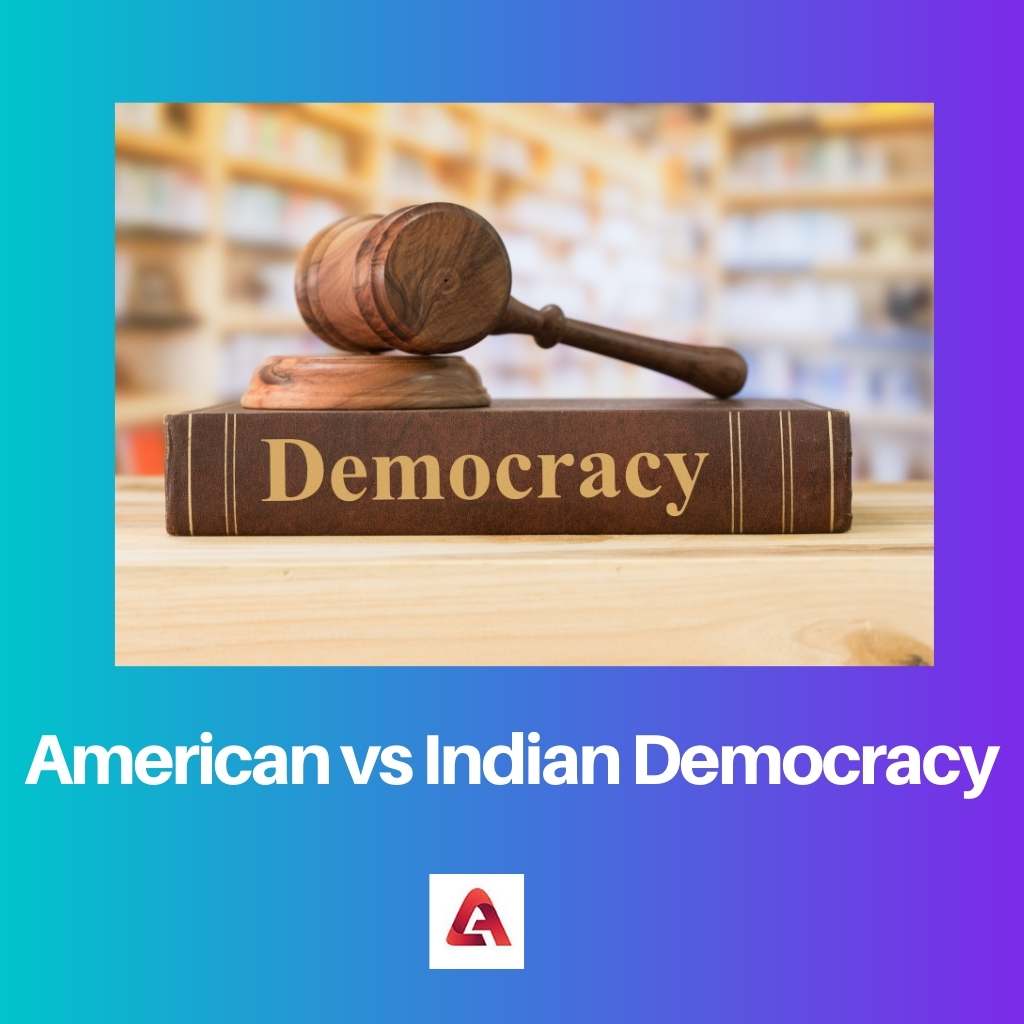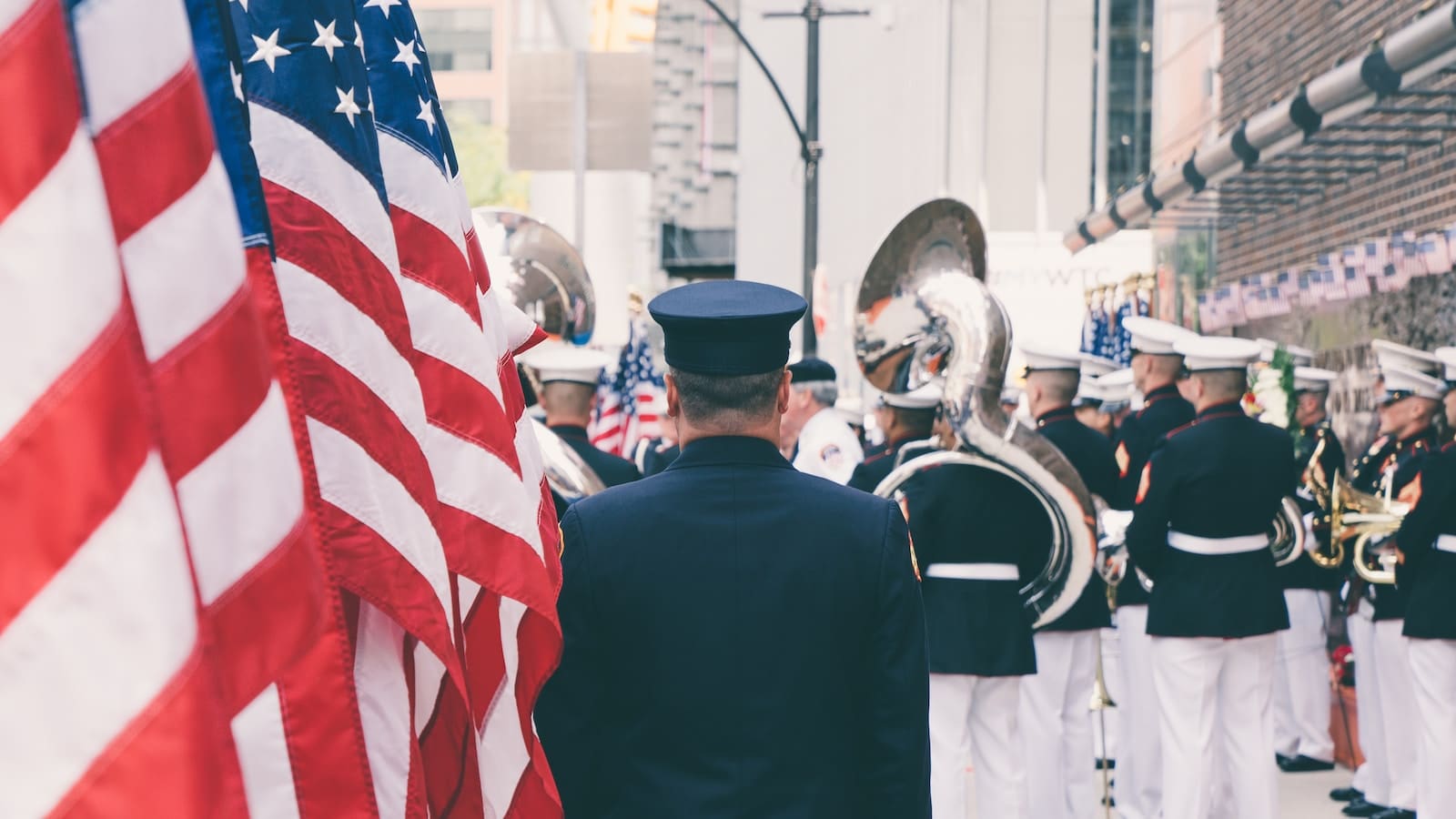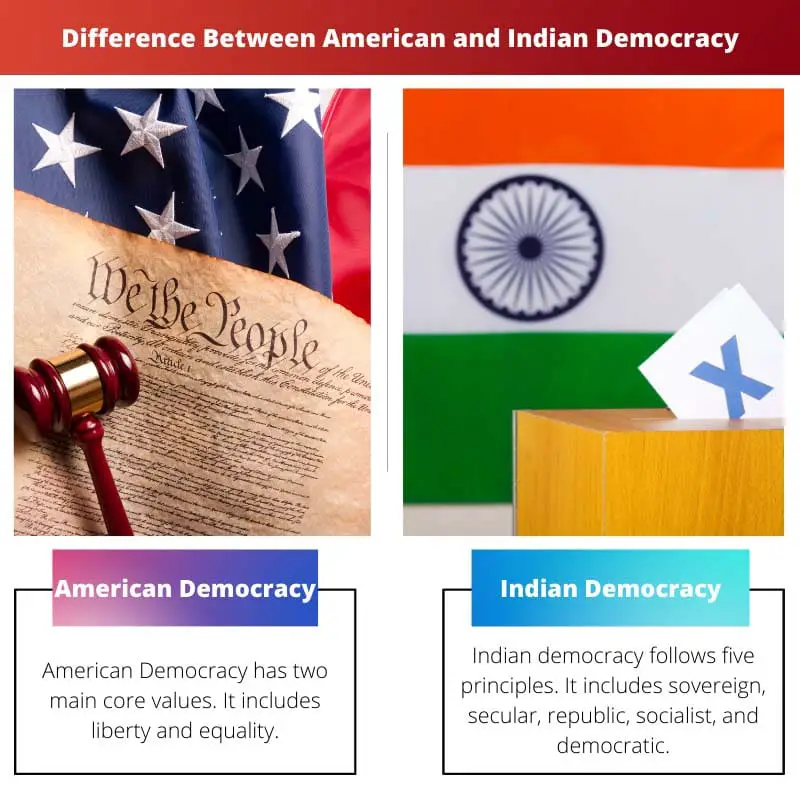Democracy is nothing but where people get their rights, especially the normal citizens who will have the right to vote for their country. Almost all countries follow their own democracy and have their own principles for them. American democracy is different from Indian democracy in terms of its parties and the way the people rule the country.
Key Takeaways
- American democracy follows a presidential system, while Indian democracy uses a parliamentary system.
- India has a multi-party system with numerous regional and national parties, while the United States primarily operates as a two-party system.
- Both democracies are committed to federalism, separating powers between the central government and states.
American vs Indian Democracy
The difference between American and Indian Democracy is that in American democracy, the president will be their executive. But in Indian democracy, the prime minister will be their executive. The parties that are allowed to nominate in American Democracy are 2. But the parties that can contest in elections can be many in Indian Democracy.

American Democracy has two main core values. It includes liberty and equality. These two words will represent their basic values which are involved in the democratic political systems. This is included in the United States of America. Apart from the five basic principles in their democracy, they also involve two more principles which are individual rights and republicanism.
Indian democracy follows five principles. It includes sovereign, secular, republic, socialist, and democratic. Even though democracy is not the only solution for the best governance in the world, we have no other choice but to accept it. India became democratic after gaining its independence in 1947. The democracy of India is derived from our constitution of India.
Comparison Table
| Parameters of Comparison | American Democracy | Indian Democracy |
|---|---|---|
| Executive | The President is the executive | The prime minister is the executive |
| Legislature | It will be controlled by the congress | It will be controlled by the prime minister |
| Party system | They have only two parties to nominate them | They have several parties to nominate them |
| Government | They follow presidential form | They follow parliamentary form |
| Federation | True federation | Quasi federation |
What is American Democracy?
It is a representative democracy. The government will be elected based on the citizen’s choice. So, the citizens will vote to choose their government officials. Americans can participate in democracy in two ways. They can vote for their contestant and also contact the elected officials. American democracy follows these two ways in electing their government official. Their main idea and motive are to follow political equality and equality of conditions.
Here the majority of the decisions will be made by the people. This provides a strong foundation for democracy. American democracy follows five principles. They follow popular sovereignty, power separation, federalism, limited government, and checks and balances. During the evolution of American democracy, they worked out two large processes. This democratic idea evolved from Roman and Teutonic ideas.
Their concept is slightly original. This is also considered another chapter in the history’s adjustment area. They follow liberal democracy. American democracy is evidently in a rudimentary stage. They mainly focus on equality and freedom, making people choose their rights in their work. The main principle of democracy is to conduct a fair and protected election. This is very much followed in American democracy, where people are given equal rights.

What is Indian Democracy?
In Indian democracy, the president is the head of the state. The word democracy means ruling the people. In India, citizens can vote for their contestants every 5 years. Once the person gets selected, they will serve the country for 5 years. To select this person, citizens will cast their votes. We have two types of elections held in India. One is selecting the chief minister for a particular state. For this, many people will contest the election.
And the next type is selecting the prime minister for the entire country. For this, the selected candidate will also rule the entire country for 5 years. They can contest their votes for the person of their choice. In Indian democracy, elections will be held, and people are given their choice to select the party that they want. In India, many people will contest for the election. It will contain a detailed understanding of the citizens’ rights and also provides a view of the proper functioning of the democratic government.
Democracy in India provides citizens to vote irrespective of their caste, who they are, their religion, and gender. Various parties in India will stand for election. They will tell the people what all the tasks they will do after getting selected are. This will help the people choose the right party for their state and country.

Main Differences Between American and Indian Democracy
- The principle involved in American Democracy is 7. On the other hand, the principle involved in Indian Democracy is 5.
- The executive of the American Democracy is President. On the other hand, the executive of Indian Democracy is Prime Minister.
- Congress will control the legislature in American Democracy. On the other hand, the legislature in the Indian Democracy is controlled by the Prime Minister.
- In American Democracy, they only have two parties to nominate. On the other hand, in Indian Democracy, they will have several parties to nominate.
- The form that is followed in American Democracy is presidential. On the other hand, the form that is followed in Indian Democracy is parliamentary.
- The federation involved in American Democracy is a true federation. On the other hand, Indian Democracy is a quasi-federation.






